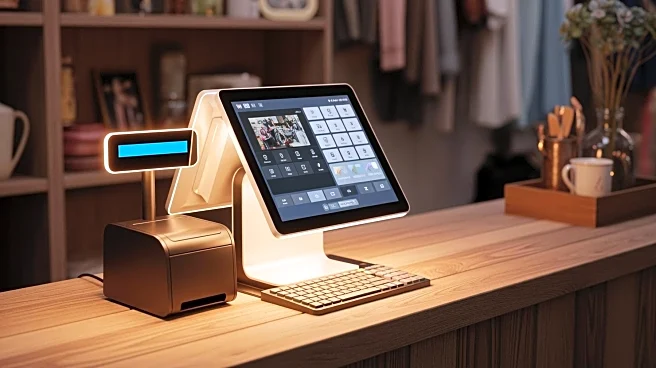What's Happening?
Shopify's Point-of-Sale (POS) system is being highlighted as a key tool for thrift stores looking to integrate omnichannel retailing. The system allows thrift stores to manage inventory across multiple
sales channels, including online platforms, which is crucial for stores dealing with unique, one-of-a-kind items. Shopify POS provides real-time product data, enabling thrift stores to cater to omnichannel shoppers who typically spend more than single-channel shoppers. The system also offers features like multi-store inventory tracking, stock alerts, and detailed inventory reports. Mandalyn Renicker, owner of Offbeat Bikes, noted the system's ability to streamline inventory management, which was previously a tedious process. Shopify POS is part of a broader trend where thrift stores are adopting advanced retail technologies to improve efficiency and customer experience.
Why It's Important?
The integration of omnichannel retailing in thrift stores represents a significant shift in how these stores operate, potentially increasing their competitiveness in the retail market. By adopting systems like Shopify POS, thrift stores can offer a seamless shopping experience that meets modern consumer expectations. This is particularly important as consumers increasingly demand the convenience of online shopping combined with the unique offerings of thrift stores. The ability to manage inventory in real-time and across multiple channels can lead to increased sales and customer satisfaction. Additionally, the use of such technology can help thrift stores better manage donations and inventory, ultimately leading to more efficient operations and potentially higher profits.
What's Next?
As more thrift stores adopt omnichannel retailing systems, there may be a broader transformation in the secondhand retail sector. Stores that successfully implement these systems could see increased customer loyalty and sales. The trend may also encourage other thrift stores to invest in similar technologies to remain competitive. Furthermore, as these systems become more widespread, there could be advancements in the technology itself, offering even more features tailored to the unique needs of thrift stores. Stakeholders, including store owners and technology providers, will likely continue to explore ways to enhance these systems to further improve the thrift shopping experience.
Beyond the Headlines
The adoption of omnichannel retailing in thrift stores also raises questions about the digital divide and access to technology. Smaller thrift stores or those in less affluent areas may struggle to afford or implement these systems, potentially widening the gap between different types of thrift stores. Additionally, there are cultural implications as thrift stores, traditionally seen as community-focused and low-tech, move towards more sophisticated retail models. This shift could change the perception of thrift stores and their role in the community.












